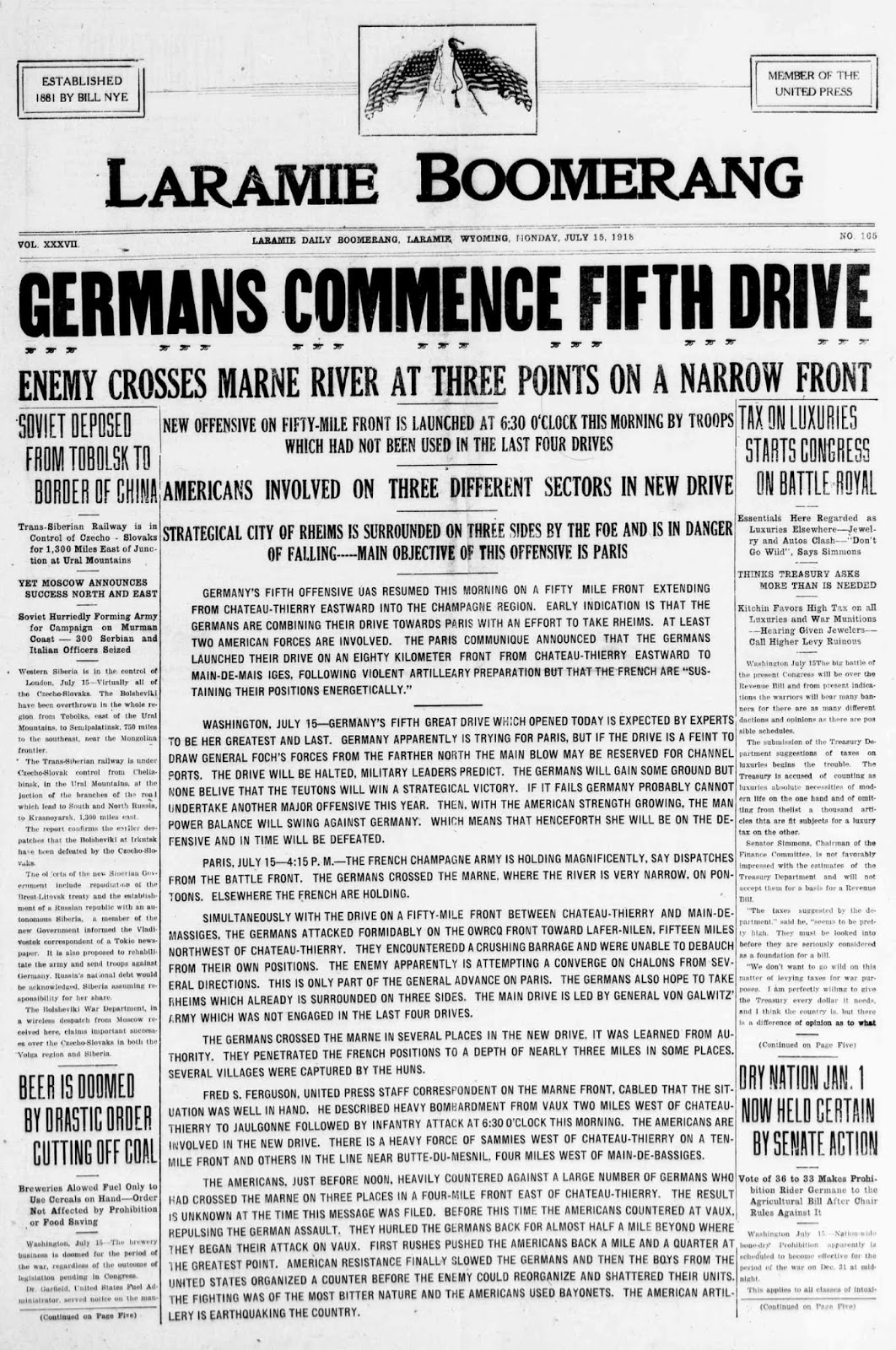The DI of the 148th Field Artillery. Many of the Wyoming Guardsmen who served as infantry on the border were reassigned to this Field Artillery unit made up of Rocky Mountain Region and Northwestern Guardsmen during World War One.
If you'd been wondering what became of the men of the Wyoming National Guard, whom we started following with their first muster into service with the Punitive Expedition, the Wyoming State Tribune gave us a clue.
As readers will recall, quite a few of those men were put in to the 148th Field Artillery. None of them deployed as infantry, which is what they had been when first mustered for border service with Mexico and then again when first recalled for the Great War. Not all of them ended up in the 148th, but quite a few did, which was a heavy artillery unit of the field artillery. Indeed, a quite modern one as it used truck, rather than equine, transport.
Here we learned that the 148th was at Château-Thierry.
Another version of the distinctive insignia for the unit with additional elements for the western nature of the composite elements.
To flesh it out just a bit, the 148th at that time was made up of elements of the 3d Rgt of the Wyoming National Guard, the 1st Separate Battalion Colorado Field Artillery, and the 1st Separate Troop (Cavalry) Oregon National Guard. They were part of the 66th FA Bde. They'd arrived in France on February 10, 1918, just prior to the German's massive Spring 1918 Offensive. They were equipped in France with 155 GPF Guns and Renault Artillery tractors.
155 GPF in use by American artillerymen.
They went to the front on July 4, 1918 and were emplaced directly sought of Château-Thierry and began firing missions on July 9. After that engagement, they'd continue on to participate in the St. Mihiel Offensive and the Meuse Argonne Offensive. By the wars end, they'd fired 67,590 shells.
American Army Renault EG Artillery tractor with a GPF in tow. Note the wood blocks for chalks.
The unit went on to be part of the Army of Occupation in Germany following the war, a mission with which it was occupied until June 3, 1919, when it boarded the USS Peerless for New York. It was mustered out of service at Camp Mills, New York, on June 19, 1919, with Wyoming's members sent on to Ft. D. A. Russell for discharge from their World War One service.
We'll pick this story up again as we reach those dates, but as we made a dedicated effort to follow these men early on, we didn't want to omit their story later. Wyomingites reading the papers in 1918 learned of their service, accepting censored soldier mail, for the first time on this day in 1918. While news reporting done by the U.S. and foreign press during World War One was often remarkably accurate, one set of details that was kept generally well hidden was the service, and even the fate, of individual American servicemen and units. Wyomingites now learned what role many of their Guardsmen had played in the war for the first time.
And it was a significant one.








